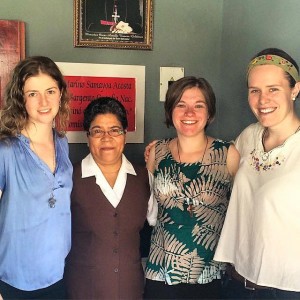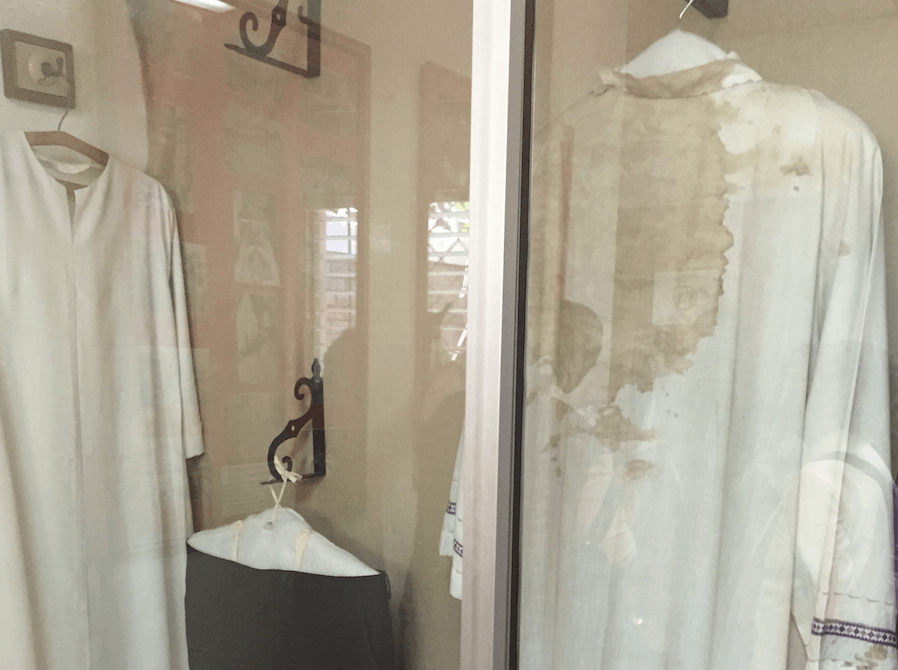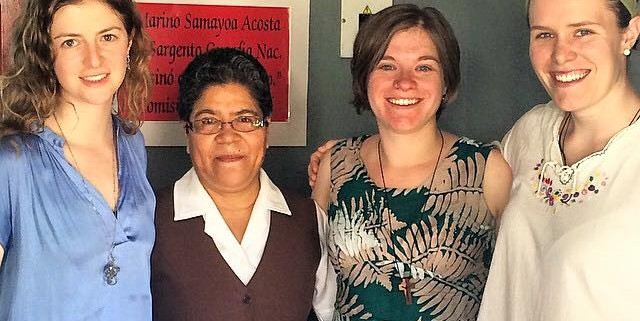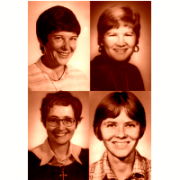Romero Is Risen in the People: Where should his relics remain?
BY NATALIE TERRY | May 22, 2015
Natalie Terry is participating in the events surrounding Archbishop Oscar Romero’s beatification in El Salvador and will be sharing reflections about her experience throughout the weekend. Natalie is a graduate of John Carroll University ’10 and the Jesuit School of the Theology of Santa Clara University ’14 and is currently in further studies at JST. Other reflections can be found here.

Natalie Terry (center right) with other U.S. pilgrims and Sr. Silvia Barrera (center left), a Carmelite Missionary Sister at the house of Archbishop Romero. [PHOTO CREDIT: Christine E. McCarthy]
Yesterday, church officials arrived to take the relic, but with large crowds at Divina Providencia Chapel, they decided to wait. This morning priests arrived to pray with the sisters, followed by another priest accompanied by three police officers. Sister Silvia Barrera, who shared her experience with us, accounted that the priest’s face was ashen, anticipating the pain that removing this relic would bring to the Missionary Sisters’ community. As officials removed the relic, a street cleaning crew came to clean the street leading to the hospital and home of Oscar Romero. This was done in an effort to clear out pilgrims and bystanders from the area. The relics were placed in a church official’s car and driven to the cathedral. When I arrived at the chapel this morning traffic was blocked and the street cleaning crew were just leaving the entrance to the hospital, accompanied by at least three police officers.
The sisters have carefully cared for his memory for the past thirty-five years and they hope that the Romero’s relic will be returned. Romero is risen in the people and his relics, should our memories of him remain with the people?

The blood-stained vestment that Oscar Romero was wearing when shot while celebrating Mass. The vestment was removed indefinitely from his former house, now a museum under the care of the Carmelite Missionary Sisters of St. Therese.
Natalie Terry is director of the Ignatian Spiritual Life Center, a ministry of St. Agnes Parish in San Francisco, CA. She has a Masters of Divinity from the Jesuit School of Theology of Santa Clara University in Berkeley, California. She is currently working on her thesis for a Licentiate in Sacred Theology in the area of sacramental theology. She graduated from John Carroll University in 2010 with Bachelor of Arts in religious studies and served as a volunteer with the Sisters of the Humility of Mary in Pulaski, Pennsylvania. Natalie has been a facilitator and prayer leader with the Ignatian Solidarity Network, and she serves as a lay preacher, lector, Eucharistic minister and presider of Communion services and Liturgies of the Word. She is also currently serving as the Director of Children’s Faith Formation at St. Agnes Parish. She is originally from Wynantskill, New York.











Surely it would be better for getting people who would only be drawn in by relics to also go to the Divina Providencia Hospital and connect their reverence for a declared Blessed’s relic with real practical responsibility for people who are still alive and still need reverencing and loving? Surely that’s the point of this whole exercise? By all means, display the blood stained shirt at the cathedral for a while around the celebration, but then it should go back.